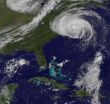(Press-News.org) PHILADELPHIA –- An international collaboration led by a University of Pennsylvania anthropologist has shown that environmental factors, like temperature and light, play as much of a role in the activity of traditionally nocturnal monkeys as the circadian rhythm that regulates periods of sleep and wakefulness.
The study also indicates that when the senses relay information on these environmental factors, it can influence daily activity and, in the case of a particular monkey species, may have even produced evolutionary change. It is possible, according to the study results, that changes in sensitivity to specific environmental stimuli may have been an essential key for evolutionary switches between diurnal and nocturnal habits in primates. The study also provides data to better understand all life cycles.
Researchers set out to examine the hypothesis that masking, the chronobiology term for the stimulation or inhibition of activity, was largely caused by changing environmental factors that affected the Azara's owl monkeys' internal timing system, or synchronized circadian rhythm. Put simply, changes in temperature and light make Azara's owl monkeys the only anthropoid primate (monkeys, apes and humans) with a propensity for both early bird and night owl behavior.
The observational nature of field studies has generally limited science's understanding of the mechanisms responsible for the change in activity patterns of these species, whose behavior traditionally takes place in the dimmest of light. Researchers monitored the activity of these wild owl monkeys continually for as long as 18 months using actimeter collars fitted to them.
The results represent the first long-term study of wild primates providing direct evidence for environmental masking, according to researchers.
The data indicate that, although regular daytime activity is represented by the output of a circadian clock, nocturnality is the result of fine-tuned masking of circadian rhythmicity by environmental light and temperature.
Specifically, date showed that nocturnal activity was more consolidated during the relatively warmer months of September to March than during the colder months of April to August, when temperatures in the Argentine province of Formosa regularly fall below 10ºC. Throughout the year, nocturnal activity was higher during full-moon nights than during new-moon ones, and these peaks of nocturnal activity were consistently followed by mornings of low activity. Conversely, new-moon nights were usually followed by mornings of higher diurnal activity than mornings following full-moon nights.
"The behavioral outcome for these owl monkeys is nocturnal activity maximized during relatively warm, moonlit nights," said Eduardo Fernández-Duque, lead investigator and an assistant professor in the Department of Anthropology in Penn's School of Art and Sciences.
"While laboratory studies have pointed to the importance of masking in determining the environmental factors that cause animals to switch from nocturnal activity patterns to diurnal ones or vice versa, our study underscores the importance of masking in determining the daily activity patterns of animals living in the wild. It also suggests that moonlight is a key adaptation for the exploitation of the nocturnal niche by primates," he said.
Conclusive evidence for the direct masking effect of light was provided when three full lunar eclipses completely shadowed moonlight, coinciding with diminished monkey activity. Temperature also negatively masked locomotor activity, and this masking was manifested even under optimal light conditions.
"If there was a biological clock that they were depending on to regulate this activity, you could expect the activity to continue even in the absence of lunar light," said Horacio de la Iglesia of the Department of Biology at the University of Washington.
Primates — even humans — conduct their daily tasks in patterns ranging from nocturnality to diurnality, with a few species showing activity both during day and night. Among anthropoids (monkeys, apes and humans), nocturnality is only present in the Central and South American owl monkey genus Aotus. But unlike other tropical Aotus species, the Azara's owl monkeys (A. azarai) of the subtropics, and this study, have actually switched their activity pattern from strict nocturnality to one that also includes regular daytime activity. The phenomenon led researchers to question the causes of such a behavioral change.
"Harsher climate, food availability and the lack of predators or daytime competition have all been proposed as factors favoring evolutionary switches in primate activity patterns," Fernández-Duque said.
"The lunar day has not been a stable force as much as the solar day to evolutionarily select for a clock," de la Iglesia said. "We still have to prove it in the lab, but the evidence in this paper points to a lack of a lunar biological clock."
###
The article appears in the current issue of the journal PLoS ONE.
The study was conducted by Fernández-Duque, de la Iglesia and Hans G. Erkert of the University of Tübingen.
The research was funded by the Zoological Society of San Diego, Leakey Foundation, Wenner-Gren Foundation and National Geographic Society. It was authorized by the Ministerio de la Producción, Subsecretaría de Ecología y Recursos Naturales and Dirección de Fauna from Formosa Province.
NASA satellite data has noticed that Tropical Storm Fiona is getting "longer." That is, the storm is elongating in almost a north-south direction, indicating that she's weakening and may not make it through the weekend. Meanwhile, forecasters are watching two other areas for development in the eastern Atlantic this weekend.
The Geostationary Operational Environmental Satellite, GOES-13 captured an image of Fiona on Friday, Sept. 3 at 10:32 a.m. EDT and the visible image showed a weak circulation in Fiona's center. It also appeared that Fiona's clouds were "stretched" ...
NASA satellites and the International Space Station are keeping eyes on Hurricane Earl as it heads for New England. Watches and Warnings are posted in the U.S. northeast.
Having felt the effects of both increasing wind shear and cooler waters, Hurricane Earl weakened to a Category 2 storm on the Saffir-Simpson scale with winds still powerful at 90 knots (104 mph) as it neared the North Carolina coast. It was at this time that the Tropical Rainfall Measuring Mission (TRMM) satellite captured the data about TRMM's rainfall rates.
The rainfall pattern associated with ...
MBL, WOODS HOLE, MA—One of the big, unsolved problems in explaining how life arose on Earth is a chicken-and-egg paradox: How could the basic biochemicals—such as amino acids and nucleotides—have arisen before the biological catalysts (proteins or ribozymes) existed to carry out their formation?
In a paper appearing in the current issue of The Biological Bulletin, scientists propose that a third type of catalyst could have jumpstarted metabolism and life itself, deep in hydrothermal ocean vents.
According to the scientists' model, which is experimentally testable, molecular ...
SAN ANTONIO, TX (Sept. 3) — A long-term study of women with a genetic predisposition for breast or ovarian cancer showed that those who elected major preventive surgeries had a significantly reduced risk of those cancers.
The study, published Sept. 1 in the Journal of the American Medical Association, confirms the view of one of its researchers, Gail Tomlinson, M.D., Ph.D., interim director of the Greehey Children's Cancer Research Institute at The University of Texas Health Science Center at San Antonio.
Dr. Tomlinson said that for women with certain genetic mutations, ...
Something has been eating Charlie Kerfoot's doughnut, and all fingers point to a European mollusk about the size of a fat lima bean.
No one knew about the doughnut in southern Lake Michigan, much less the mollusk, until Michigan Technological University biologist W. Charles Kerfoot and his research team first saw it in 1998. That's because scientists have always been wary of launching their research vessels on any of the shipwreck-studded Great Lakes in winter. But NASA's new Sea-viewing Wide Field-of-view Sensor (SeaWiFS) Project was giving scientists a safer way to ...
Summer is winding down, and Dr. Eric Mariotti (www.drmariotti.com) is now seeing an increase in consultation requests at his Walnut Creek area plastic surgery practice. With kids heading back to school, parents are finding that their schedules are freeing up and many are making more time for their cosmetic goals.
"As a father myself, I understand how busy summers can get for parents," states Dr. Eric Mariotti. "Between watching the kids and working, it can be pretty hard to find time for yourself in the summer months. Early fall is when a lot of people start thinking ...
As the year end deadline looms for President Obama's American Recovery and Reinvestment Act of 2009, Galaxie Home Remodeling wants every Chicago Area Homeowner to take advantage of this Federal Tax Credit before it expires. As a further incentive to the federal tax credit, Galaxie is now offering free installation on it's replacement windows. The federal program says that qualifying 'Energy saving" purchases made before the end of this year, are eligible for a 30% credit off of the purchase price, up to $1,500.
Galaxie, a full-service home remodeling serving the Greater ...
American Wave Machines, Inc. (AWM), an innovator in artificial wave technology, today announced that for the first time surfboards with fins have been ridden in a surf machine that includes a barreling standing wave. The machine debuted at the Himlabadet Municipal Aquatic Sports and Spa Facility in Sundsvall, Sweden. The machine is another first for AWM and the locals in Sundsvall turned out in force to ride SurfStream at the opening day event sponsored by Quiksilver and Red Bull.
The event was a successful live demonstration of the newly patented barreling wave technology ...
Recently HomeschoolBlogger.com (HSB)—the largest and free homeschool blog site in the world—got a clean, fresh, new look with an exciting combination of new features, as a result of implementing an important software upgrade.
According to The Old Schoolhouse Magazine publisher/owner Gena Suarez, "The plan behind the change is to tie great blogging in with the ever-expanding homeschool community to usher back in the 'blogging craze' that hit when HomeschoolBlogger was launched in 2005. It was a lot of work, we pushed forward, and now we're doing it. This is a major upgrade, ...
Nicknamed "St. Louis Animal Whisperer" by NBC TV-DSDK, Dr. Ava Frick is known as a miracle worker for her success in caring for animals. She was awarded by Hartz Mountain as the 2006 Veterinarian of the Year Runner-Up and given the Visionary Award by the Franklin County Humane Society. Her book "Fitness in Motion" created a stir among horse enthusiasts across the globe and she enjoys an excellent reputation for her success in rehabilitating animals.
The Animal Fitness Center at 1841 Denmark Road Union, Missouri performs advanced therapy and treatments and with Dr. Frick's ...



